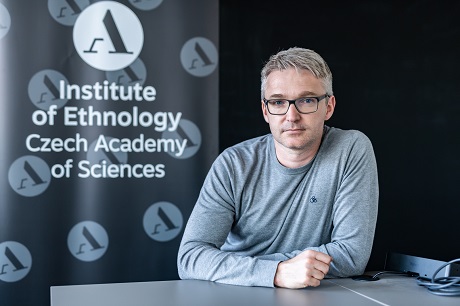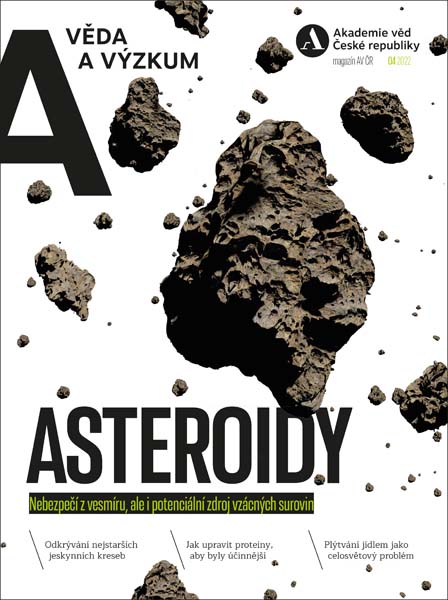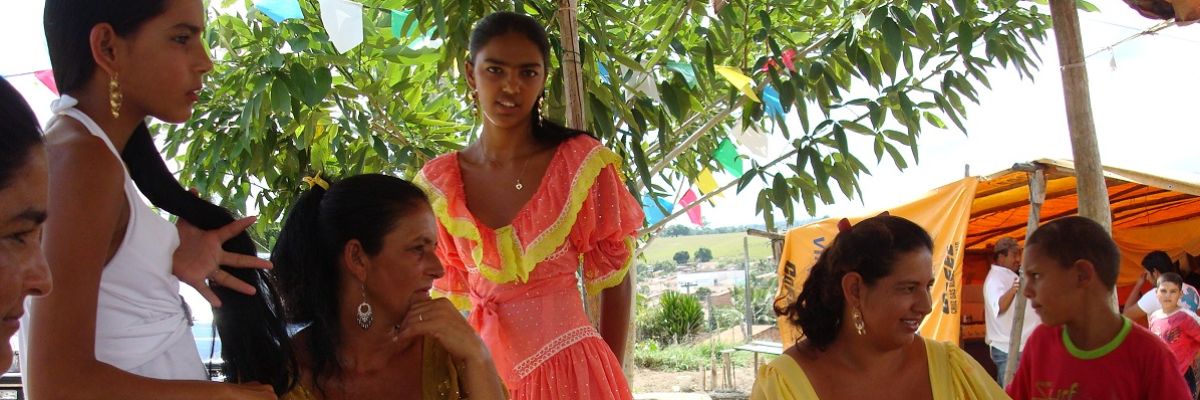
The Romani Atlantic: How do the Roma live in Brazil, Angola, and Cape Verde?
06. 04. 2023
International Roma Day falls on 8 April. The Roma have not only lived in Europe for centuries, but they have also been present on the American continent and, to some extent, in Africa since the very beginning of colonisation. What unites the Romani people from different regions of the world, and what makes them different? Can we speak of a global Roma identity? These are the questions that anthropologist Martin Fotta from the Institute of Ethnology of the CAS is focusing on in the project Romani Atlantic, funded by the Lumina Quaeruntur Award.
Her name is Brena and she is just over twenty years old. She married her cousin Ariel when she was seventeen and they have a young daughter together. They both come from a traditional Roma, or more precisely, a Calé family, as the Brazilian Roma call themselves. Yet this young couple is a bit unorthodox. When Brena was getting married, she made it a condition that she wanted to study and become a doctor. She was one of few in her community to finish high school and go to university. She is the daughter of a wealthy, successful Roma man who is considered the leader of that particular region and was able to provide her with a substantial dowry.
The young couple moved to Salvador, the capital of the state of Bahia (one of the twenty-six states that make up the federation of Brazil), for their studies. The extended family stayed in the town of Utinga, four hundred kilometres away. The money, which was provided by Brena’s father through a dowry, is now managed by Ariel’s father, who has included it in his business, being able to thus support the young couple in the big city.
Need a loan? Go see the ciganos
Ariel’s father, like Brena’s father and many other Calon men in Brazil today, is in the money business. “They lend money not only within the Romani community. Anyone who finds it difficult to get a loan from a bank goes to them, and there are actually quite a lot of people like that in Brazil,” says anthropologist Martin Fotta from the Institute of Ethnology of the CAS. These are typically farmers who grow what they need to live, but don’t have enough money to, for instance, fix their roof. Since they can’t get a loan from a bank, they go see one of the local ciganos.
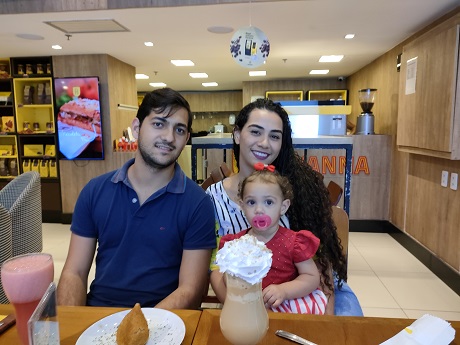
Brena and Ariel come from a traditional calé family but are building their own life in the big city.
Men stand around banks and other money institutions, offering their services to those who get rejected by the official channels of the financial market. Or to those who, for whatever reason, find it more advantageous to borrow money this way. The more successful financiers lend directly out of their own homes, and it’s necessary to go see them ideally with a personal recommendation. Funnily enough, sometimes even the banks themselves send their clientele to the ciganos.
The interest is usually set high, but it always depends on the specific agreement in question. The moneylending services of these ‘bankers from the hinterland’, as one journalist called them, are utilised not only by poor farmers, but also by large-scale landowners, businessmen, and politicians. People from outside the community are also involved in the moneylending business; it is not a purely Roma affair. The informal economy is very much connected to the official one in Brazil; for instance, local police officers are also involved in debt collecting.
The Brazilian Roma are therefore part of the shadow economy and operate on the edge of legality, but this is a common phenomenon in Brazil in general and is not limited to one single ethnic or cultural group. So what is the position of the Roma in Brazilian society? Is it comparable to Europe, or to the Czech Republic or Slovakia? And how do the Romani people live elsewhere in the world?
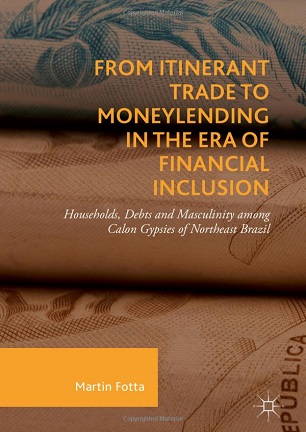
Martin Fotta wrote a book on the financial entrepreneurship of the Brazilian Roma, published by Palgrave Macmillan in 2018.
From Eastern Slovakia to Brazil
These are the questions Martin Fotta has been asking himself for the past few years and will also try to answer in his new project entitled The Romani Atlantic, which the Czech Academy of Sciences supported last year with the Lumina Quaeruntur Award.
Fotta has been focusing on Romani issues since the beginning of his university studies. Although he studied in Utrecht and at University College London, he wrote his bachelor’s and master’s theses on the topic of the Roma from eastern Slovakia, where he is from. “At that time, in the early 2000s, there was a lot of talk in the West about the Eastern European Romani. Roma families were migrating from Slovakia and the Czech Republic to the UK and Canada, the introduction of visas was in play, it was just overall a very lively topic,” he recalls.
During his doctoral studies in anthropology, an opportunity arose to travel to the more exotic South America, which opened up a whole new perspective for the young Slovak. He originally wanted to focus on Argentina, but it seemed almost too “European” to him. On the other hand, the situation in the Brazilian state of Bahia seemed far removed from a European perspective. Its current capital, Salvador, was one of the world capitals of the slave and sugar cane trades at the time of Portuguese colonisation. The vast majority of Bahia’s population of more than fourteen-and-a-half million people are dark-skinned, many of them descendants of the original slaves, but also of the colonisers, the Roma among them as well.
“There is still a strong Roma community in Bahia today. I was very interested in what their life is like in an area where they are not a segregated minority, but one of the groups that are co-creating a new society,” Fotta says.
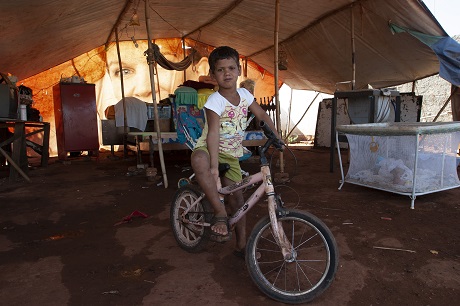
The Roma in Brazil are not a minority, but one of the many cultural groups that make up the multicultural mosaic of a society of more than 200 million people.
On the ship with Christopher Columbus
The Romani people in Brazil – the Calon – are mostly descendants of the Portuguese Roma who were documented to have lived in what is now Brazil in the sixteenth century. The very first Roma even arrived on the South American continent on one of Christopher Columbus’ ships. According to written sources, it was in 1498 that four ‘Egyptians’, as the Roma were then called, were deported to the island of Hispaniola to serve their sentences. Larger groups of the Roma arrived in Brazil, particularly in the north-eastern territory of Bahia, during the eighteenth century, when they were being transported there by the Portuguese monarch.
Despite often arriving on the new continent involuntarily, the Roma were able to find their bearings quickly in their new location. There are even documented cases of some individuals becoming successful slave traders.
Although several centuries have passed since their arrival on Brazilian soil, many of the Calon still retain their Romani identity today. They use Romani in private, the women wear long colourful skirts and dresses, some families live in tents and lead a nomadic lifestyle. They place great emphasis on family life and community cohesion.
Martin Fotta’s project aims to examine the Roma identity from a global perspective and to offer a different perspective than the predominant, purely European one, which permeates contemporary studies of Romani history, language, and other realities and presents the Romani story within the limited context of the majority/minority dichotomy – that is, how the state and the social majority relate to the Romani minority at present and in the past.
The Roma in Brazil are not a minority as we perceive it in Europe. They are one of the many cultural groups that make up the contemporary multicultural mosaic of a society of more than 200 million. Brazil may have been the largest Portuguese colony, but it was not the only one. At the same time that the Roma were arriving on South American shores, they were also reaching Angola and the Cape Verde archipelago, which is located in the Atlantic Ocean off the western coast of the African continent.
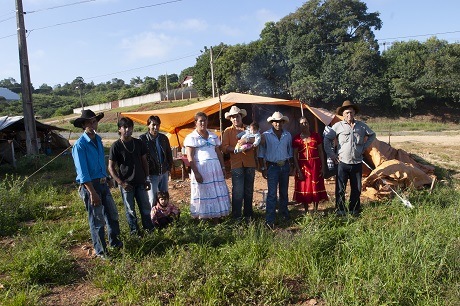
Anthropologist Martin Fotta wants to look at the phenomenon of a global Roma identity.
Living in a Romani neighbourhood
For ethnologists and anthropologists, one important method of working is participant observation, in which the researcher attempts to get as close as possible to the subject of their research. It is imperative to establish a close relationship with the people whose lives they are trying to understand, to talk and spend time with them. Martin Fotta got to know many Brazilian Roma during his first research trip during his studies, returning to visit them repeatedly. “The beginnings were not easy. I kind of appeared out of the blue, introducing myself to them in broken Portuguese: ‘My name is Martin, I’m a student from Europe, and I have some questions for you’. At first, they didn’t really get what I wanted from them, but after a while, they realised I was harmless and got used to me,” the anthropologist recalls with a laugh. He and his then girlfriend were renting a flat right on the “gypsy street” (Rua dos ciganos) in a small town in Bahia.
This time around, one of the members of the project team, Anna Clara Viana from Brazil, will be conducting detailed research on the ground in Brazil. Another colleague, Tina Magazzini, who is from Italy, will focus mainly on research work in Portugal. So far, the big unknown for the research team is the situation in Angola, which Martin Fotta wants to take a closer look at, initially by examining archival documents.
“It was one of the worst places you could end up during the Portuguese colonisation, mainly because of the diseases that posed a threat to the Europeans. Getting deported to Angola was a serious problem,” the researcher says. Not only did the authorities deport Portuguese people, including the Roma, to Angola, they also sent offenders from Brazil there as punishment. The governor of Angola, however, requested the Roma in particular, because they were more capable of making the dangerous journey inland in search of ivory.
What kinds of surprises the research in Angola will unearth remains to be seen. At the moment, Martin Fotta is arranging when to go to Angola, which locations to visit, and who to see. He needs to go through the archives to find out how strong the Roma presence in Angola was and check on the spot if there are any Roma left living in Angola. “I would be very interested to know who it is we are actually talking about, what their position in society is in an African country, and what they have in common with Portuguese and Brazilian Roma. The whole project is about transformations of identity in a space that used to be interconnected by way of the colonial empire but is now divided,” Fotta concludes.
For now, the big unknown is what exactly the research in Angola and Cape Verde will reveal and what new insights it will provide about the Roma identity. In any case, it will involve completely new data and contexts that no sociologist has ever looked at before. The research should result in at least one publication, several academic articles, and an open access database of the findings. Perhaps in the course of the search through the archives and in the field, it will be possible to uncover another interesting story, similar to the one of the young Roma couple, Brena and Ariel, in Brazil.
|
MARTIN FOTTA, Ph.D.
Fotta studied social sciences at University College Utrecht and social anthropology at University College London. He completed his PhD in Anthropology at Goldsmiths, University of London in 2012. His book, From Itinerant Trade to Moneylending in the Era of Financial Inclusion: Households, Debts and Masculinity among Calon Gypsies of Northeast Brazil, was published by Palgrave Macmillan in 2018. In 2021, Fotta received the prestigious Lumina Quaeruntur Award from the Czech Academy of Sciences to fund his project that aims to examine the Roma identity from a global perspective. |
The story in Czech can be found in the issue of the CAS magazine A / Věda a výzkum below:
4/2022 (version for browsing)
4/2022 (version for download)
Prepared by: Leona Matušková, Division of External Relations, CAO of the CAS
Translated by: Tereza Novická, Division of External Relations, CAO of the CAS
Photo: Archive of Martin Fotta; Jana Plavec, Division of External Relations, CAO of the CAS
Read also
- Public Hearing: “Making Sense of Open Science”
- SUNER-C concludes after three years dedicated to the renewable energy future
- A trapped state: The pandemic impact on public attitudes, trust, and behavior
- Aerial archaeology: Tracing the footsteps of our ancestors from the sky
- Archaeologists uncover ancient finds along Prague Ring Road
- Our microbiome largely depends on what we eat, says microbiologist Michal Kraus
- The ABCs of writing: Why did its invention mark a turning point for humankind?
- We learn, remember, forget… What can memory actually do? And can we outsmart it?
- New Center for Electron Microscopy in Brno opens its doors to global science
- The hidden lives of waste: What can we learn from waste workers and pickers?
The Czech Academy of Sciences (the CAS)
The mission of the CAS
The primary mission of the CAS is to conduct research in a broad spectrum of natural, technical and social sciences as well as humanities. This research aims to advance progress of scientific knowledge at the international level, considering, however, the specific needs of the Czech society and the national culture.
President of the CAS
Prof. Eva Zažímalová has started her second term of office in May 2021. She is a respected scientist, and a Professor of Plant Anatomy and Physiology.
She is also a part of GCSA of the EU.
